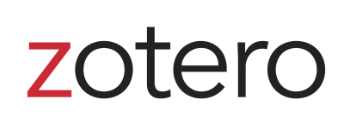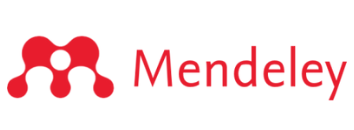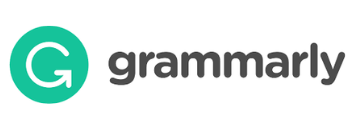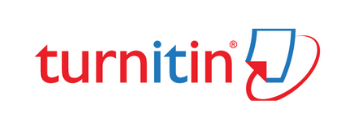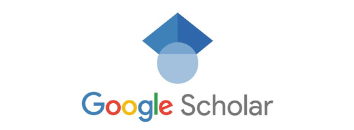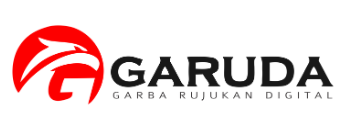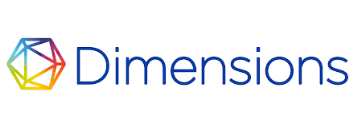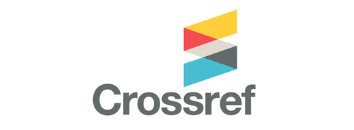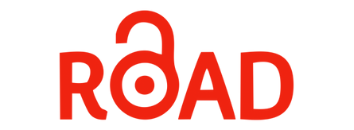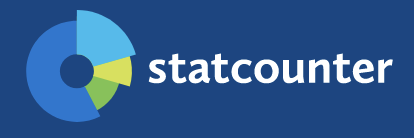Mood Management as Mediator in Consumer Motivation and Impulsive Buying Relationship
DOI:
https://doi.org/10.24002/kinerja.v26i1.5543Keywords:
impulsive buying, hedonic motivation, cool motivation, socialization motivation, mood managementAbstract
This study aims to test the relationship between consumer motivation and impulsive buying and the role of mood management as a mediator in the relationship between consumer motivation and impulsive buying. This study aims to determine the effect of hedonic motivation, cool motivation, socialization motivation on mood management and impulsive buying, especially for clothing products. Researchers used quantitative methods by collecting data through a questionnaire. The sample in this study were women who were at least 17 years old as many as 200 people. The finding of this research is that hedonic motivation, cool motivation, socialization motivation had a significant effect on mood management and impulsive buying. Hedonic motivation and socialization motivation have a significant effect on mood management, while cool motivation has no significant effect on mood management. Mood management has a significant effect on impulsive buying. Marketers need to study consumer motivation to increase sales through impulsive buying because consumer motivation and mood greatly influence purchasing decisions. Marketers need to pay attention to their marketing strategies to match the motivation of consumers who are the target market.
References
Amos, C., Holmes, G. R., and Keneson, W. C. 2014. A meta-analysis of consumer impulse buying. Journal of Retailing and Consumer Services, 21(2), 86-97.
Arnold, M. J., and Reynolds, K. E. 2003. Hedonic shopping motivations. Journal of retailing, 79(2), 77-95.
Aydın, G. 2019. Do personality traits and shopping motivations affect social commerce adoption intentions? Evidence from an emerging market. Journal of Internet Commerce, 18(4), 428-467.
Bayley, G., and Nancarrow, C. 1998. Impulse purchasing: a qualitative exploration of the phenomenon. Qualitative Market Research: An International Journal.
Beatty, S. E., and Ferrell, M. E. 1998. Impulse buying: Modeling its precursors. Journal of retailing, 74(2), 169-191.
Bird, S., and Tapp, A. 2008. Social marketing and the meaning of cool. Social Marketing Quarterly, 14(1), 18-29.
Bloch, P. H., Ridgway, N. M., and Nelson, J. E. 1991. Leisure and the shopping mall. ACR North American Advances.
Cakarnis, J., and D'Alessandro, S. P. 2015. Does knowing overcome wanting? The impact of consumer knowledge and materialism upon credit card selection with young consumers. Young Consumers.
Dawson, S., Bloch, P. H., and Ridgway, N. 1990. Shopping motives, emotional states, and. Journal of retailing, 66(4), 408-427.
Donovan, R. J., Rossiter, J. R., Marcoolyn, G., and Nesdale, A. 1994. Store atmosphere and purchasing behavior. Journal of retailing, 70(3), 283-294.
Ekman, P., and Friesen, W. V. 1969. The repertoire of nonverbal behavior: Categories, origins, usage, and coding. Nonverbal communication, interaction, and gesture, 57-106.
Erber, R., Wegner, D. M., and Therriault, N. 1996. On being cool and collected: Mood regulation in anticipation of social interaction. Journal of personality and social psychology, 70(4), 757.
Fenton‐O'Creevy, M., Dibb, S., and Furnham, A. 2018. Antecedents and consequences of chronic impulsive buying: Can impulsive buying be understood as dysfunctional self‐regulation? Psychology and Marketing, 35(3), 175-188.
Gangai, K., and Agrawal, R. 2016. The influence of personality traits on consumer impulsive buying behaviour. International Journal of Marketing and Business Communication, 5(1).
Ha, J., and Jang, S. S. 2012. The effects of dining atmospherics on behavioral intentions through quality perception. Journal of Services Marketing.
Han, Y. K., Morgan, G. A., Kotsiopulos, A., and Kang-Park, J. 1991. Impulse buying behavior of apparel purchasers. Clothing and Textiles Research Journal, 9(3), 15-21.
Hausman, A. 2000. A multi-method investigation of consumer motivations in impulse buying behavior. Journal of Consumer Marketing, 17(5), 403-426.
Holbrook, M. B., and Hirschman, E. C. 1982. The experiential aspects of consumption: Consumer fantasies, feelings, and fun. Journal of consumer research, 9(2), 132-140.
Holtzblatt, K. 2011. What makes things cool? Intentional design for innovation. interactions, 18(6), 40-47.
Hsu, C.-L., Chen, M.-C., Kikuchi, K., and Machida, I. 2017. Elucidating the determinants of purchase intention toward social shopping sites: A comparative study of Taiwan and Japan. Telematics and Informatics, 34(4), 326-338.
Huang, L.-T. 2016. Flow and social capital theory in online impulse buying. Journal of Business Research, 69(6), 2277-2283.
Huta, V., and Waterman, A. S. 2014. Eudaimonia and its distinction from hedonia: Developing a classification and terminology for understanding conceptual and operational definitions. Journal of Happiness Studies, 15(6), 1425-1456.
Iyer, G. R., Blut, M., Xiao, S. H., and Grewal, D. 2020. Impulse buying: a meta-analytic review. Journal of the Academy of Marketing Science, 48(3), 384-404.
Jeffrey, S. A., and Hodge, R. 2007. Factors influencing impulse buying during an online purchase. Electronic Commerce Research, 7(3-4), 367-379.
Knobloch-Westerwick, S. 2007. Gender differences in selective media use for mood management and mood adjustment. Journal of Broadcasting and Electronic Media, 51(1), 73-92.
Ko. 1993. The Study of Impulse Buying of Clothing Product. Unpublished Master"s Thesis.
Lai, C.-W. 2010. How financial attitudes and practices influence the impulsive buying behavior of college and university students. Social Behavior and Personality: an international journal, 38(3), 373-380.
Lyman, S. M., and Scott, M. B. 1968. Coolness in everyday life. The sociology of the absurd, 145-157.
Mort, G. S., and Rose, T. 2004. The effect of product type on value linkages in the means‐end chain: implications for theory and method. Journal of Consumer Behaviour: An International Research Review, 3(3), 221-234.
Musadik, S. H. S. A., and Azmi, I. A. G. 2017. THE NEXUS OF ‘COOL’MOTIVATION AND CREDIT CARD ON IMPULSE BUYING BEHAVIOR. A CONCEPTUAL STUDY. IJIB, 2(2), 01-17.
O’Donnell, K. A., and Wardlow, D. L. 2000. A Theory on the Origins of Coolness. ACR North American Advances.
Omar, N. A., Rahim, R. A., Wel, C. A. C., and Alam, S. S. 2014. Compulsive buying and credit card misuse among credit card holders: The roles of self-esteem, materialism, impulsive buying and budget constraint. Intangible Capital, 10(1), 52-74.
Park, E. J., Kim, E. Y., and Forney, J. C. 2006. A structural model of fashion‐oriented impulse buying behavior. Journal of Fashion Marketing and Management: An International Journal.
Reynolds, K. E., and Beatty, S. E. 1999. Customer benefits and company consequences of customer-salesperson relationships in retailing. Journal of retailing, 75(1), 11-32.
Ridgway, N. M., Kukar-Kinney, M., and Monroe, K. B. 2008. An expanded conceptualization and a new measure of compulsive buying. Journal of consumer research, 35(4), 622-639.
Rook, D. W., and Fisher, R. J. 1995. Normative influences on impulsive buying behavior. Journal of consumer research, 22(3), 305-313.
Rook, D. W., and Gardner, M. P. 1993. In the mood: Impulse buying’s affective antecedents. Research in consumer behavior, 6(7), 1-28.
Roy, A. (1994). Correlates of mall visit frequency. Journal of retailing, 70(2), 139-161.
Runyan, R. C., Noh, M., and Mosier, J. 2013. What is cool? Operationalizing the Construct in an Apparel Context. Journal of Fashion Marketing and Management: An International Journal.
Singelis, T. M., Triandis, H. C., Bhawuk, D. P., and Gelfand, M. J. 1995. Horizontal and vertical dimensions of individualism and collectivism: A theoretical and measurement refinement. Cross-cultural research, 29(3), 240-275.
Sirhindi, A. S. 2010. Critical Review of In-store and Online Impulse Purchase Behavior. Oklahoma State University.
Solomon, M. R. 2010. Consumer behaviour: A European perspective: Pearson education.
Tauber, E. M. 1972. Marketing notes and communications: why do people shop? Journal of Marketing, 36(4), 46-49.
Utami, C. W. 2010. Manajemen Ritel_Strategi dan Implementasi Operasional Bisnis Ritel Modern Di Indonesia: 2010-ISBN: 978-979-061-127-6–Salemba Empat.
Verplanken, B., and Herabadi, A. 2001. Individual differences in impulse buying tendency: Feeling and no thinking. European Journal of personality, 15(S1), S71-S83.
Verplanken, B., Herabadi, A. G., Perry, J. A., and Silvera, D. H. 2005. Consumer style and health: The role of impulsive buying in unhealthy eating. Psychology & Health, 20(4), 429-441.
Verplanken, B., and Sato, A. 2011. The psychology of impulse buying: An integrative self-regulation approach. Journal of Consumer Policy, 34(2), 197-210.
Wells, J. D., Parboteeah, V., and Valacich, J. S. 2011. Online impulse buying: understanding the interplay between consumer impulsiveness and website quality. Journal of the Association for Information Systems, 12(1), 3.
Zillmann, D. 2003. Theory of affective dynamics: Emotions and moods.




